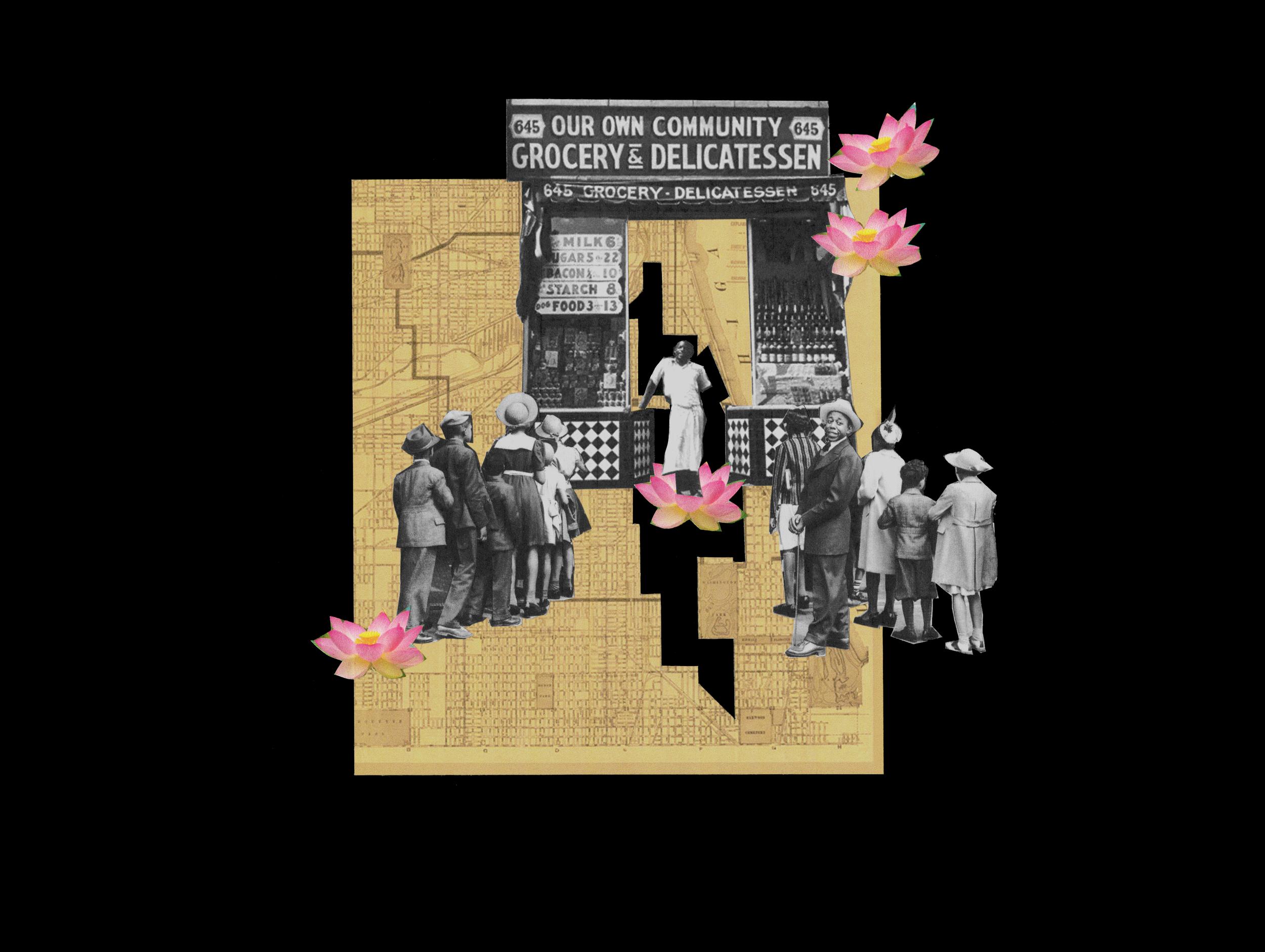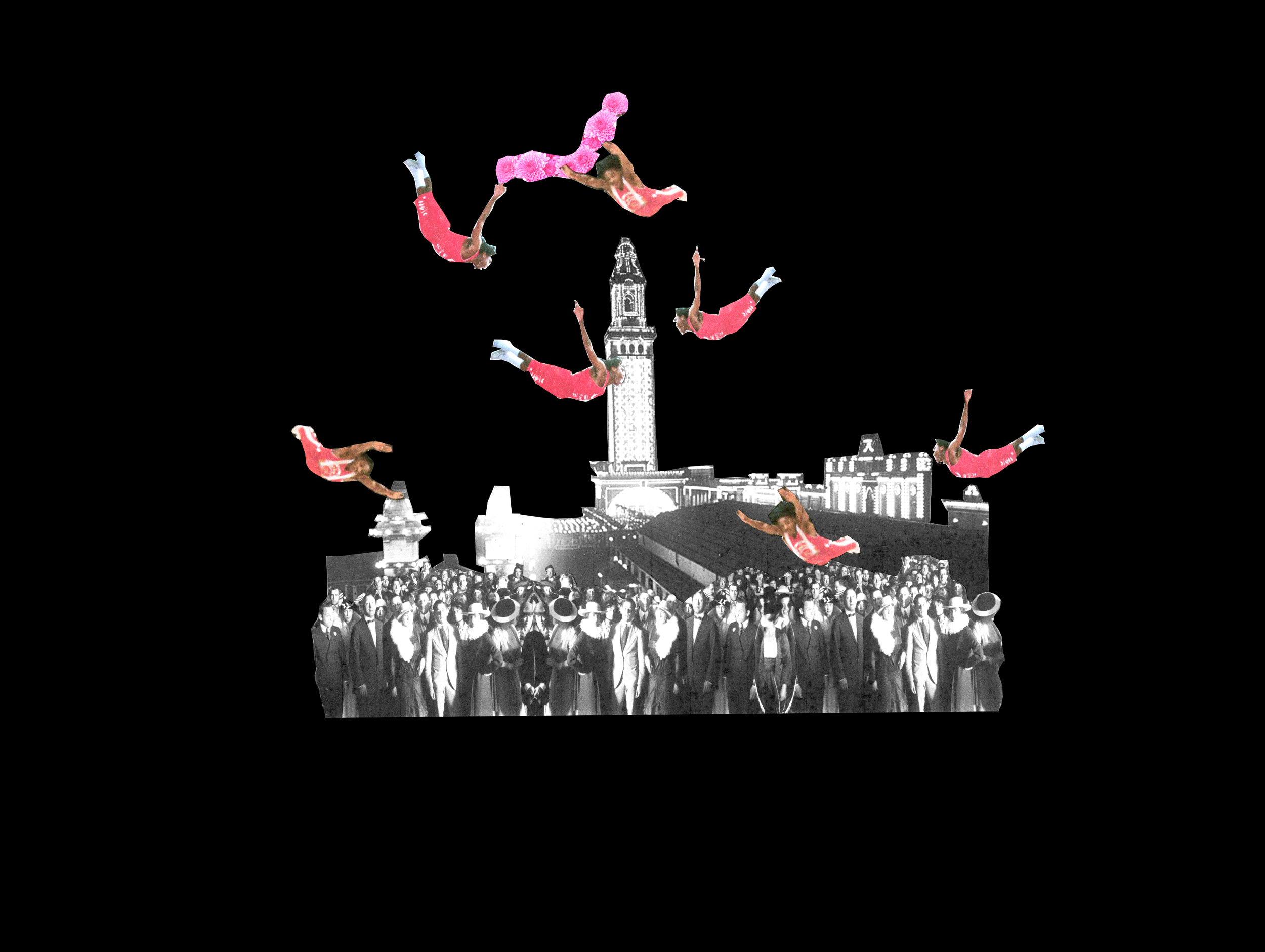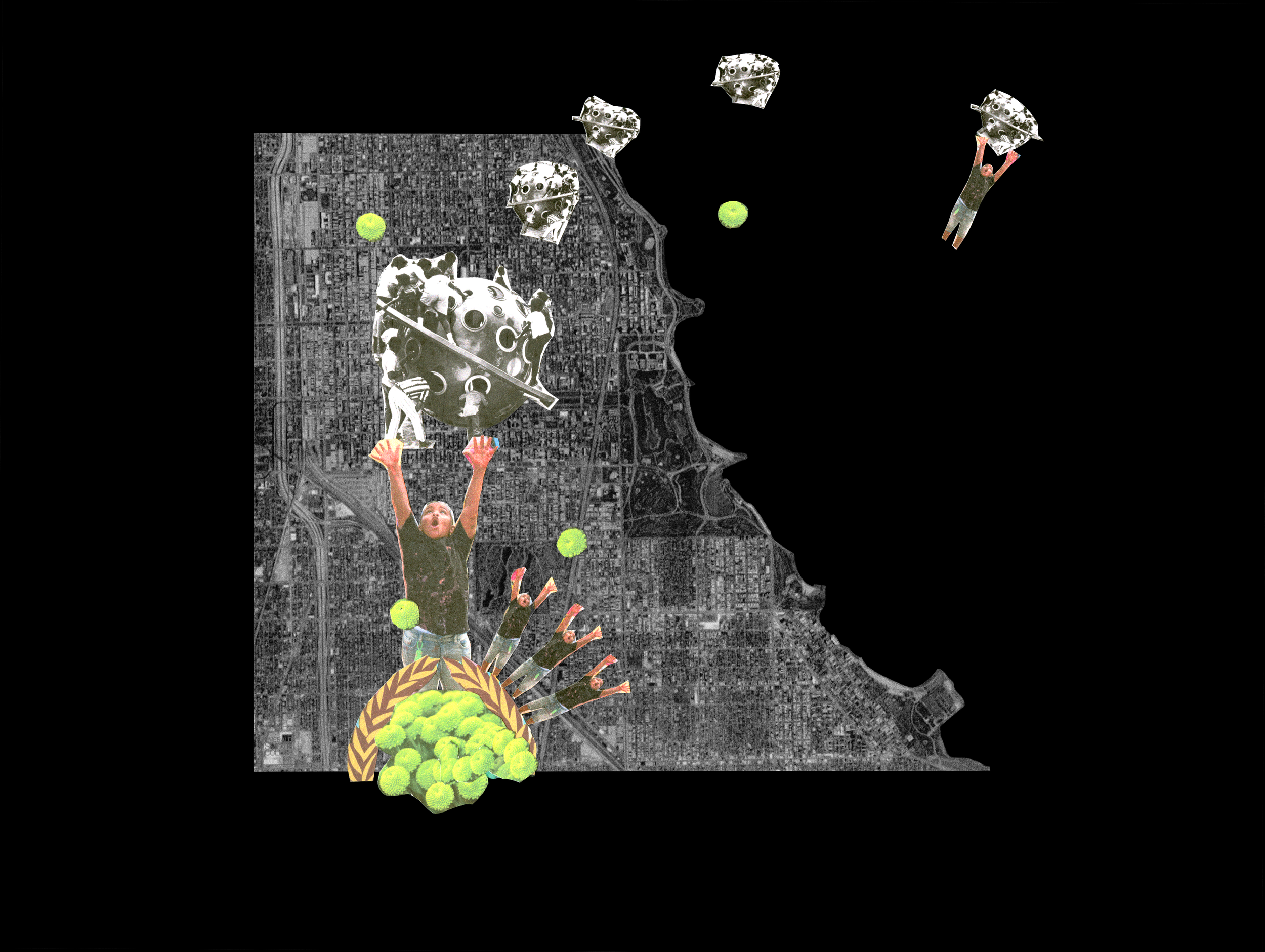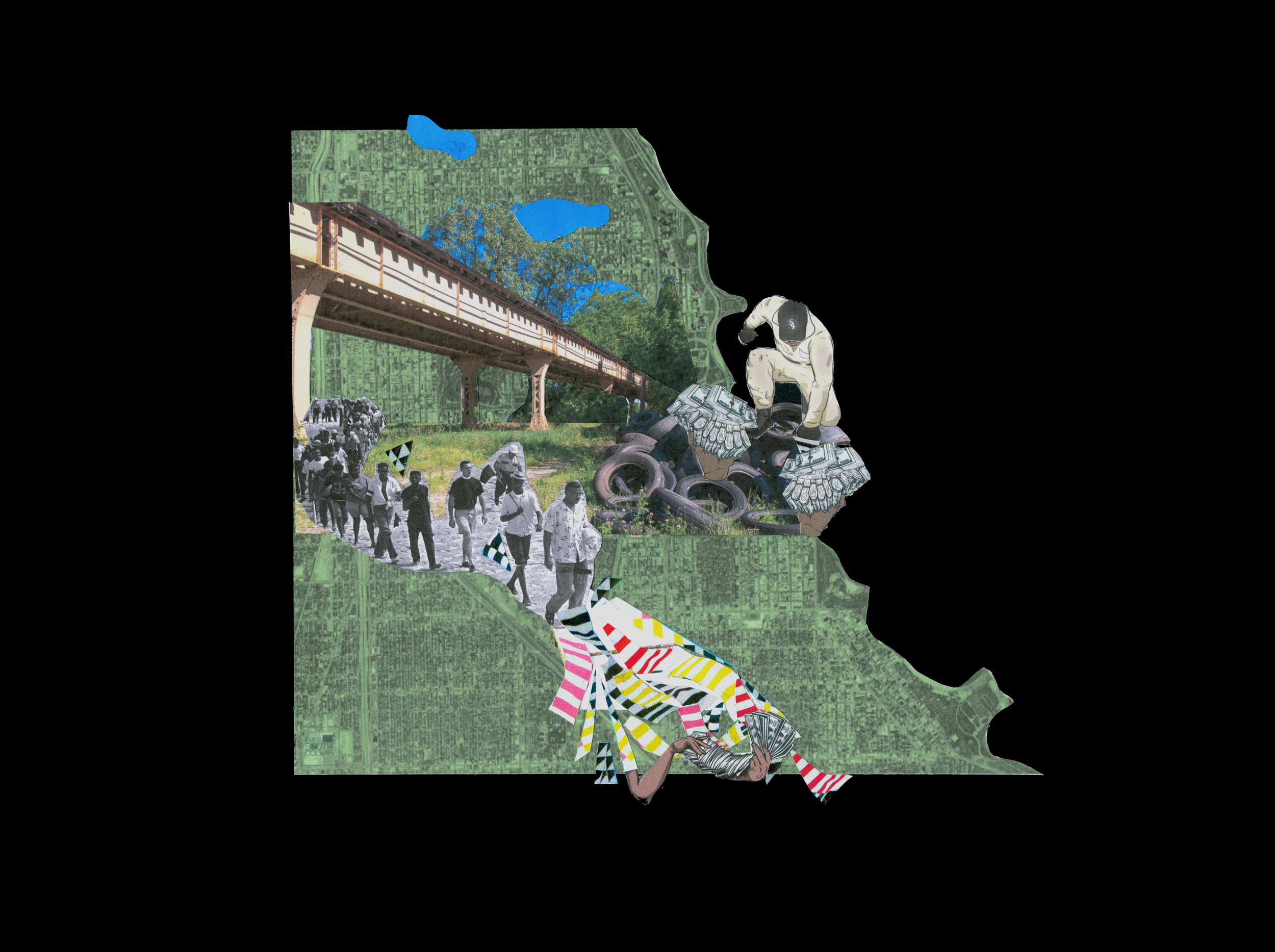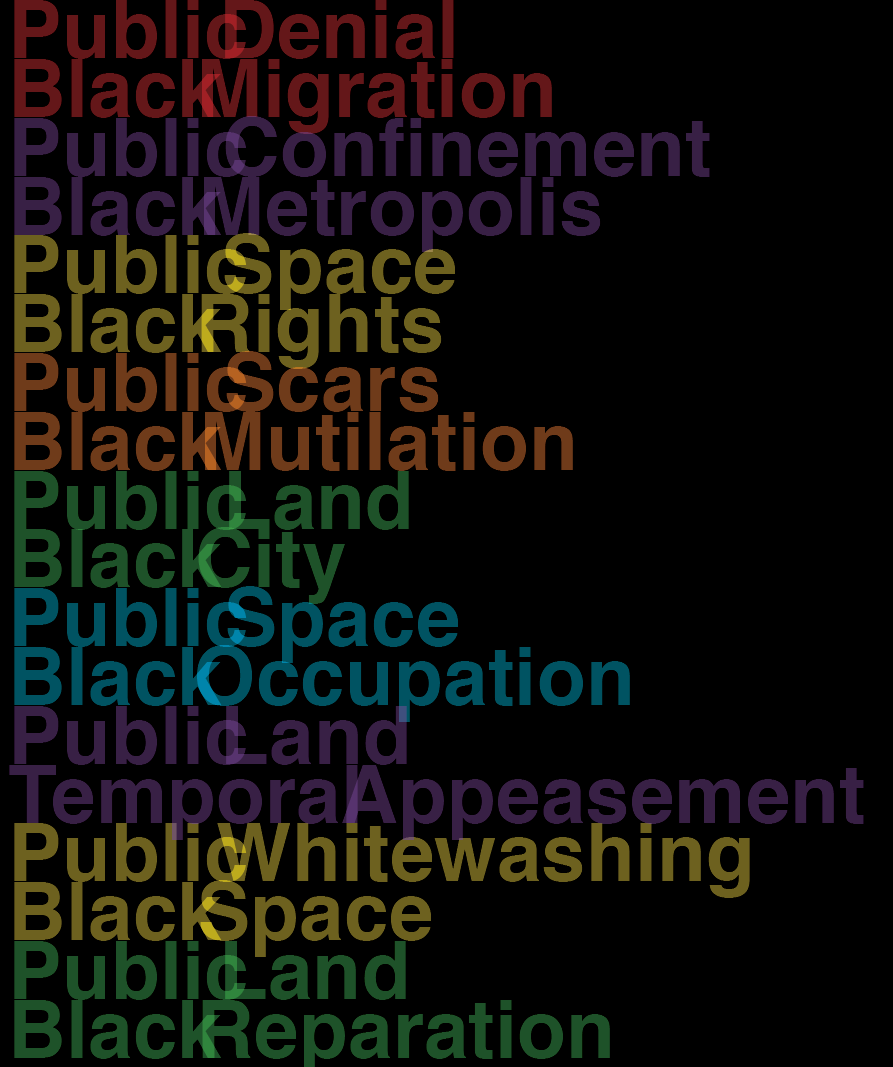Chicago Architecture Biennial: South Side Land Narratives
Publicly expressing Black pain can render reactions of solidarity, healing, and empowerment, or exhaustion, guilt, and helplessness. However, Black voice can be a powerful instrument of change—used as a currency to be saved or spent or as a carrier of demand and solution. The past year has unearthed untold knowledge that gives additional context to the root of what drives this voice—its trauma, its demands, and its joy. Making this knowledge more public can help to inform how we understand and engage one another; how we reframe harmful Black narratives that shape the public perception; and how the power of Black creativity and resiliency as a political device can produce spaces of Black-centered freedom and liberation.
South Side Land Narratives: The Lost Histories and Hidden Joys of Black Chicago aims to represent and make public the confrontation of pain and quest for joy found in the Black public realm of Chicago’s Mid-South Side. Each collage illustrates the relationship between publicness for Black Americans and the current urban landscape of vacancy including southern migration in response to public denial; the public scars left by urban renewal’s land mutilation; and the relentless pursuit of public freedoms in the public realm. The series offers a reflection on the contests that exist over land, space, and place alongside the aspiration of Black Americans to simply occupy and be carefree in public, unencumbered by fear and liberated from self-consciousness.
The collages include present-day mapping, photography, and historic images, in combination with clippings from, and references to, the imagery and symbols of Chicago’s Black life and prosperity used in the work of notable African American artists. My objective was to create new portrayals of the South Side and its people by making public some of the lesser-known narratives about these neighborhoods over the last century.
The narratives, rooted in the ownership and occupancy of land, reveal the practices of institutional racism, exclusion, and extraction, juxtaposed against images of the undiminished spirit, ambition, productivity, and creativity of Black Chicagoans.

